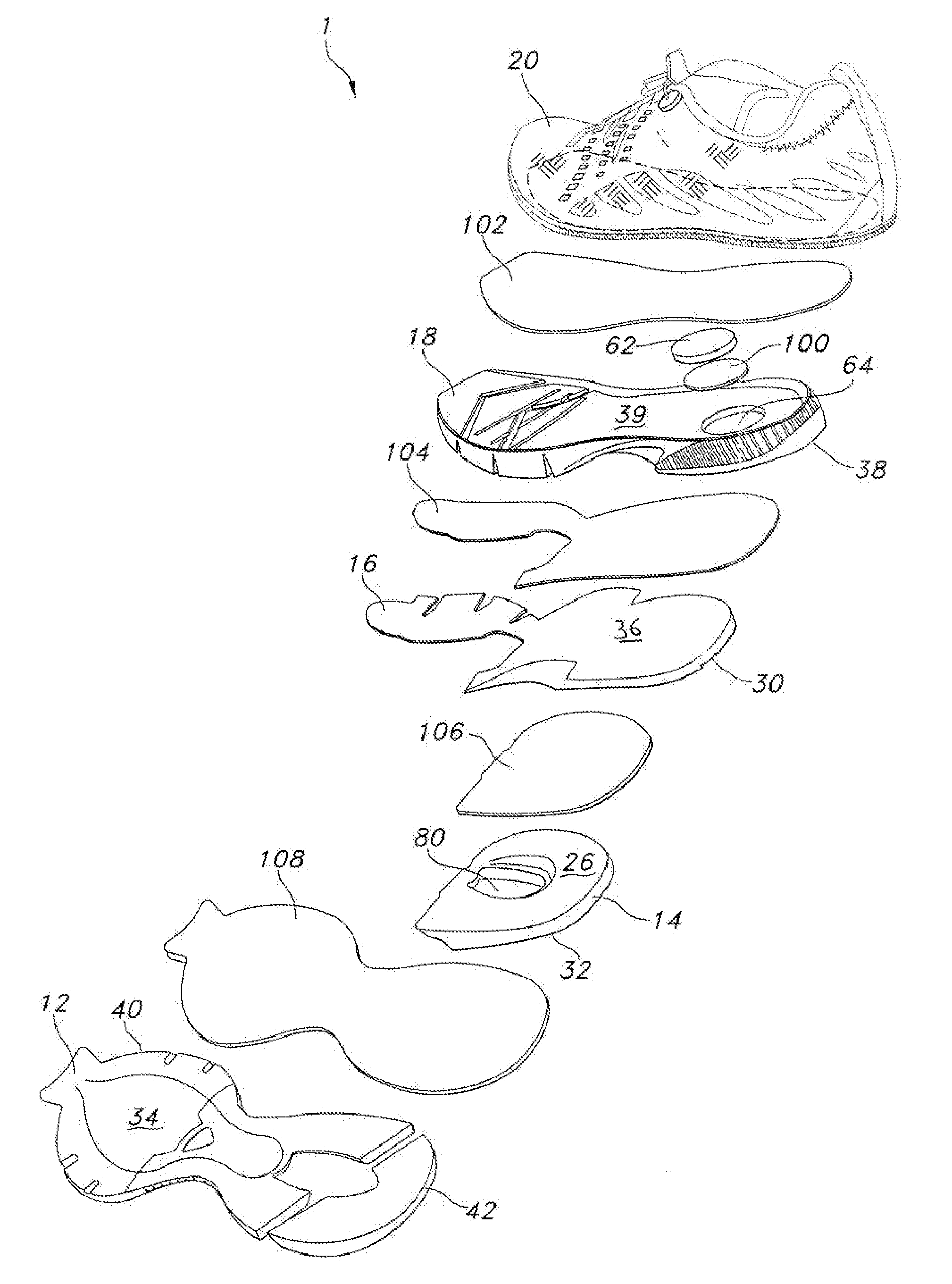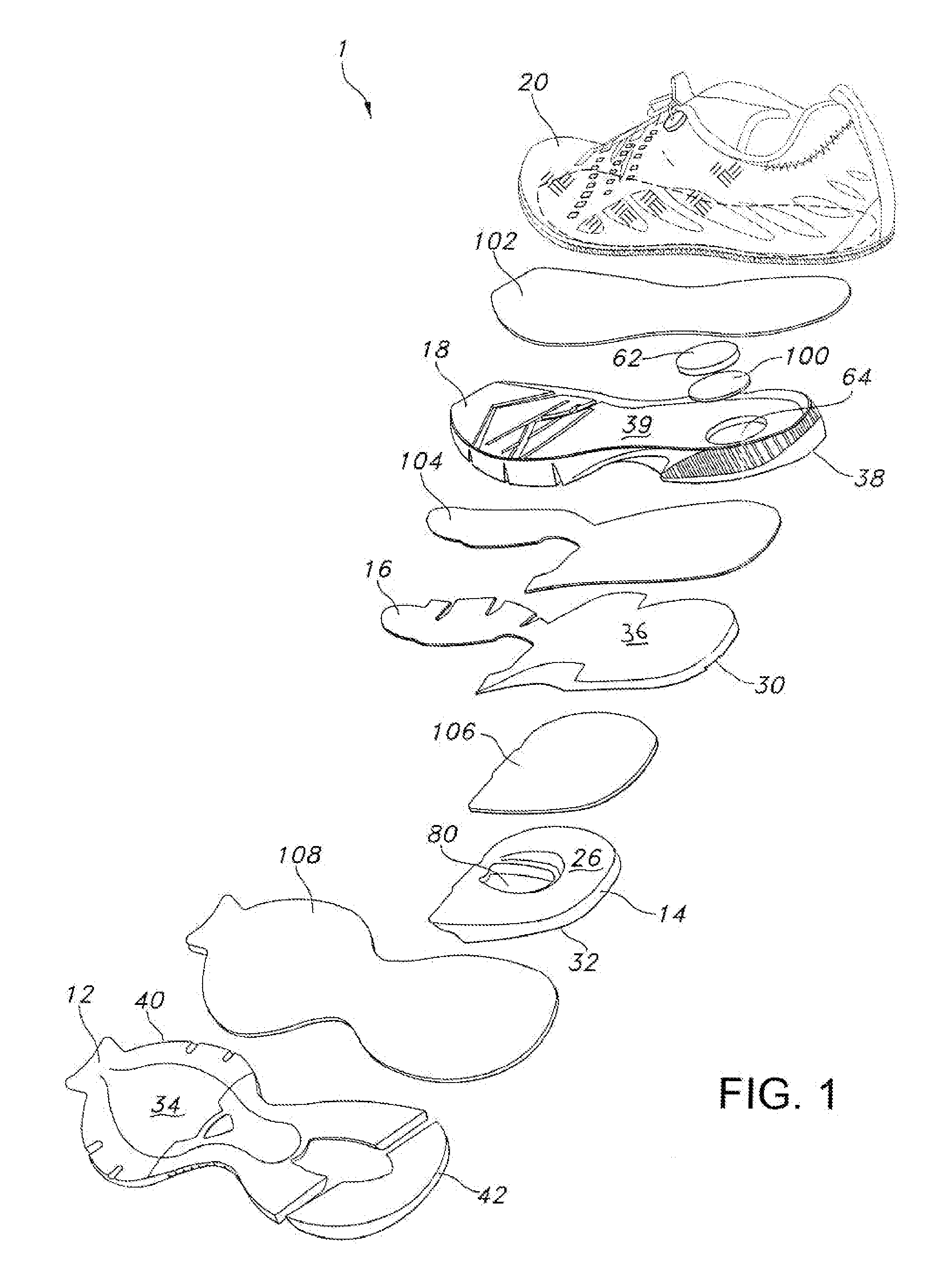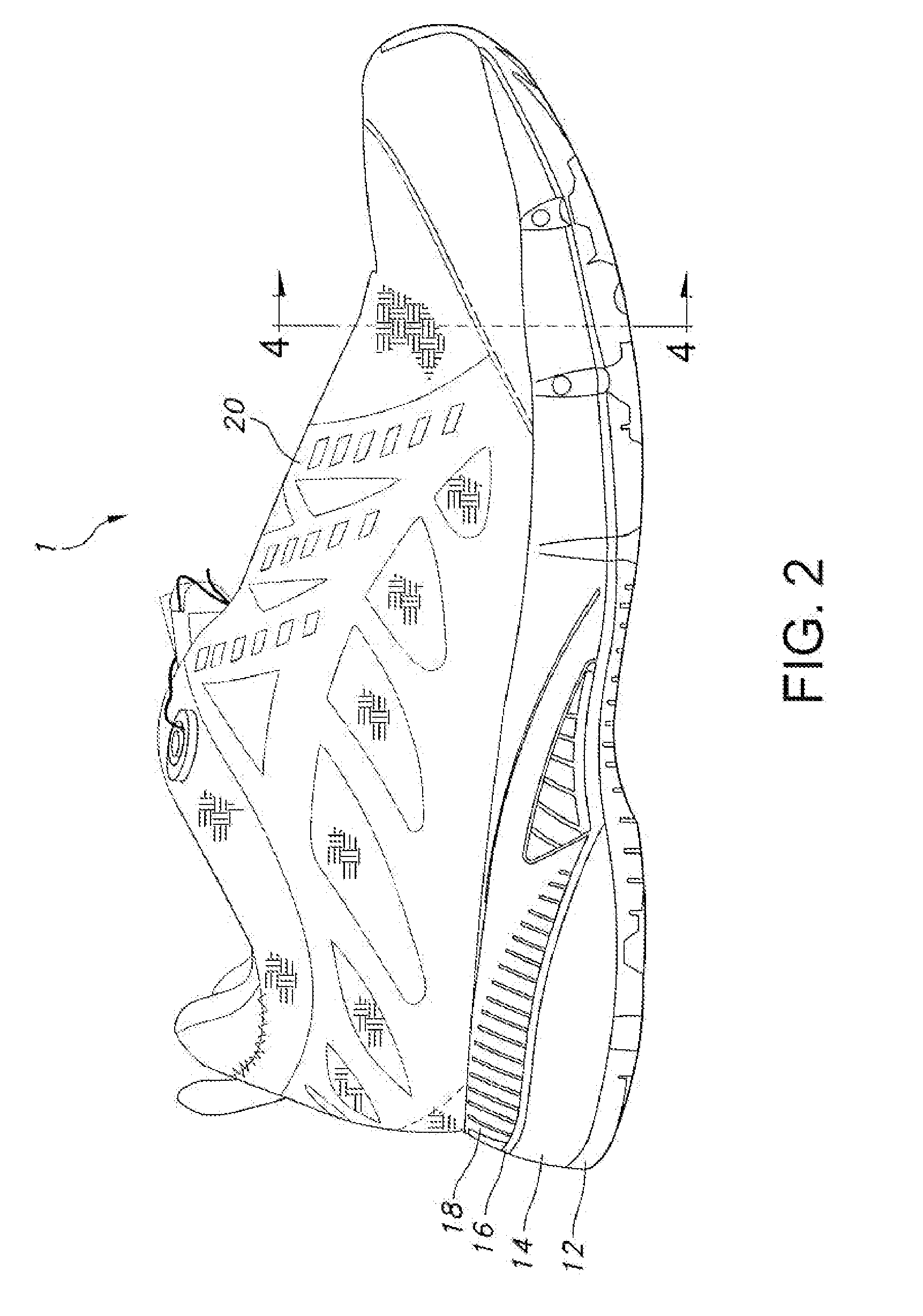Footwear sole construction
a sole construction and sole technology, applied in the field of sole construction of footwear, can solve the problems of increasing efficiencies, achieve the effects of reducing the amount of voc emissions released into the environment, less preparation, and increasing efficiencies
- Summary
- Abstract
- Description
- Claims
- Application Information
AI Technical Summary
Benefits of technology
Problems solved by technology
Method used
Image
Examples
Embodiment Construction
I. General Description
[0014]A shoe manufactured in accordance with an embodiment of the present invention is shown in FIGS. 1 and 2, and generally designated 1. The shoe 1 generally includes a footwear sole 10 and an upper 20. The footwear sole 10 generally includes an outsole 12, a heel wedge, 14, an insert 16, and a midsole 18. The footwear sole 10 may include additional, fewer, or different sole components, as desired. In the described embodiment, all of the sole components are joined with thermoplastic polyurethane (“TPU”) film to form the footwear sole 10. Moreover, the footwear sole 10 is joined with the upper 20 using TPU film to form an article of footwear, such as the shoe 1 shown in FIG. 2. The film is activated through the use of heat, high frequency welding, and pressure either alone or in combination. Excess film may be trimmed after the bonding process or the film may be precut to suitable dimensions. Although the present invention is described in connection with a con...
PUM
| Property | Measurement | Unit |
|---|---|---|
| adhesion | aaaaa | aaaaa |
| volatile organic compound | aaaaa | aaaaa |
| size | aaaaa | aaaaa |
Abstract
Description
Claims
Application Information
 Login to View More
Login to View More - R&D
- Intellectual Property
- Life Sciences
- Materials
- Tech Scout
- Unparalleled Data Quality
- Higher Quality Content
- 60% Fewer Hallucinations
Browse by: Latest US Patents, China's latest patents, Technical Efficacy Thesaurus, Application Domain, Technology Topic, Popular Technical Reports.
© 2025 PatSnap. All rights reserved.Legal|Privacy policy|Modern Slavery Act Transparency Statement|Sitemap|About US| Contact US: help@patsnap.com



